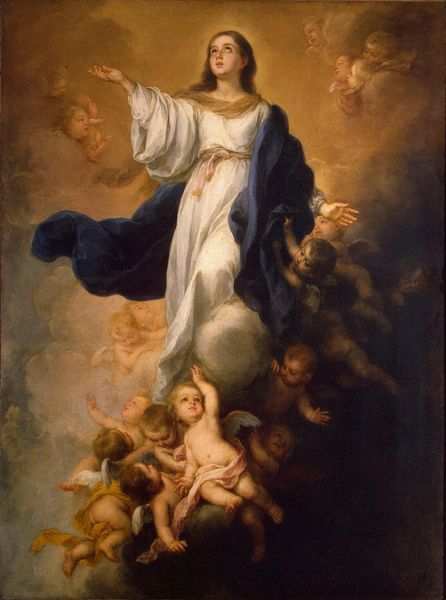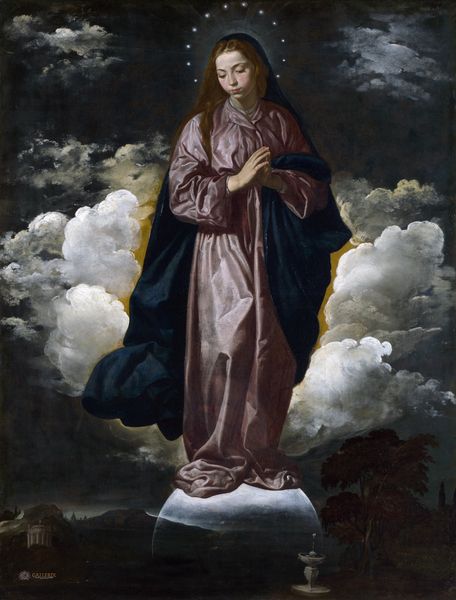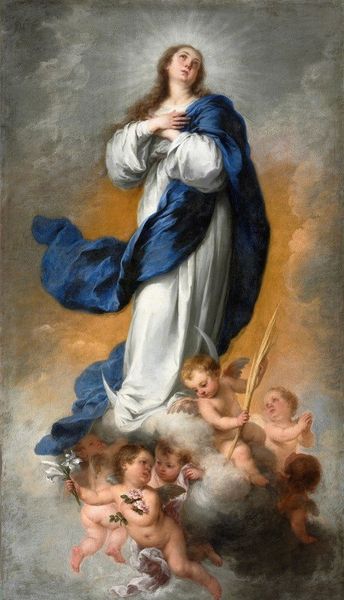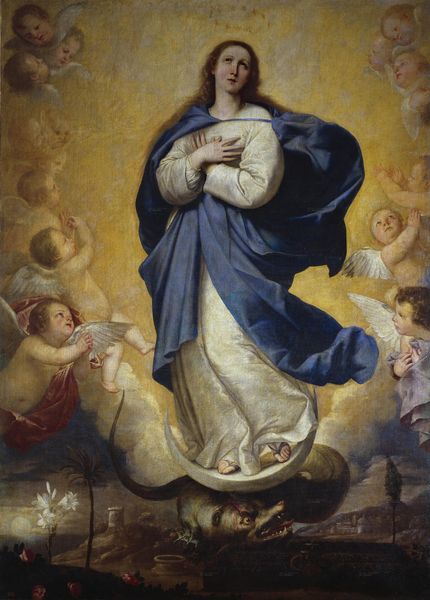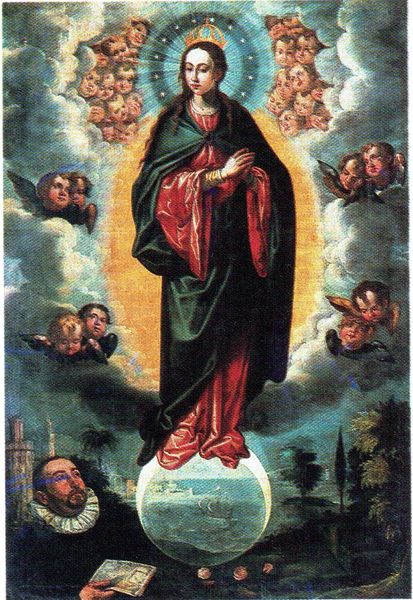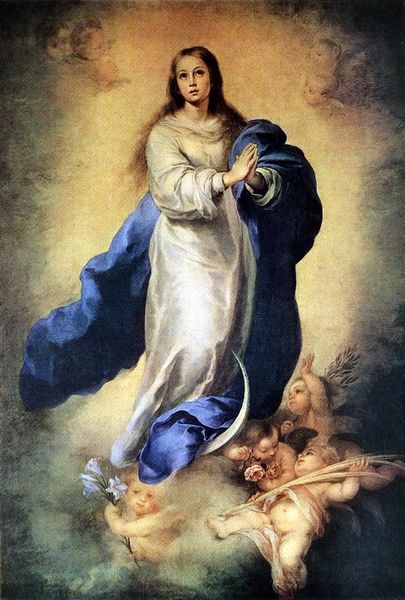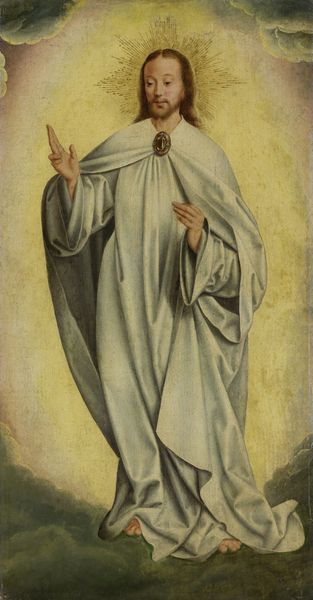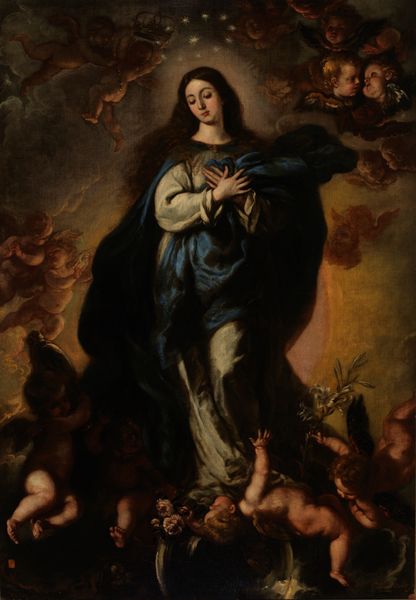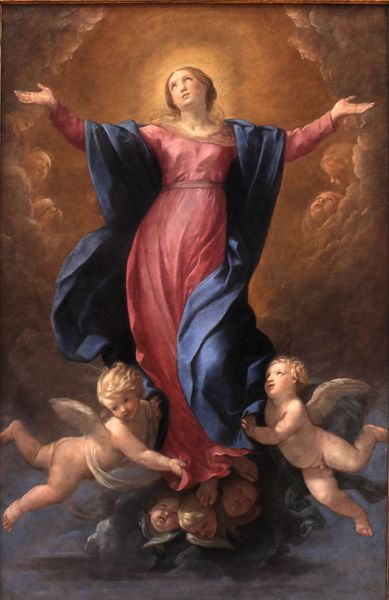
painting, oil-paint
#
portrait
#
baroque
#
painting
#
oil-paint
#
figuration
#
history-painting
#
italian-renaissance
Copyright: Public domain
Curator: It strikes me immediately as so ethereal—she's almost dissolving into the clouds. Is that intentional? Editor: Absolutely, Murillo’s “Immaculate of St. Vincent," created around 1645 using oil paint, presents us with a quintessential Baroque vision. This rendition emphasizes not just the divine status but the accessible grace of the Virgin. It reflects key Italian Renaissance ideas that focus on realistic beauty as a demonstration of moral goodness and a communication strategy of Catholic beliefs. Curator: Grace is a key word, definitely. But the cherubs at the bottom feel...a bit much? A tad sentimental, perhaps? Are they always present in such depictions? Editor: They symbolize heavenly protection and adoration, visually anchoring her to the divine realm while providing a base or plinth, if you will, to showcase the main figure. Also consider the city below, which ties into the protective symbolism afforded by the Madonna. Curator: That detail gives it more depth. I tend to focus on the visual storytelling. I get stuck sometimes wondering about the symbols we've inherited. Does she embody an ideal? A plea? A hope? Editor: Likely all three. Murillo would be drawing upon established visual cues. The immaculate conception is frequently associated with purity and represents a hope for divine intervention during tumultuous times. It also highlights the idea of hope in general in human history and a better world to come. Curator: Right, hope as a political statement. Clever. Well, it's definitely a piece that invites contemplation. Something about the lightness in the clouds feels uplifting. Editor: Agreed. It’s hard to deny its impact, and these elements, beyond the purely theological, surely played a role in this work becoming such an enduring representation. Curator: Exactly—its effect, rather than simply its intention, might be why it moves us still.
Comments
No comments
Be the first to comment and join the conversation on the ultimate creative platform.
